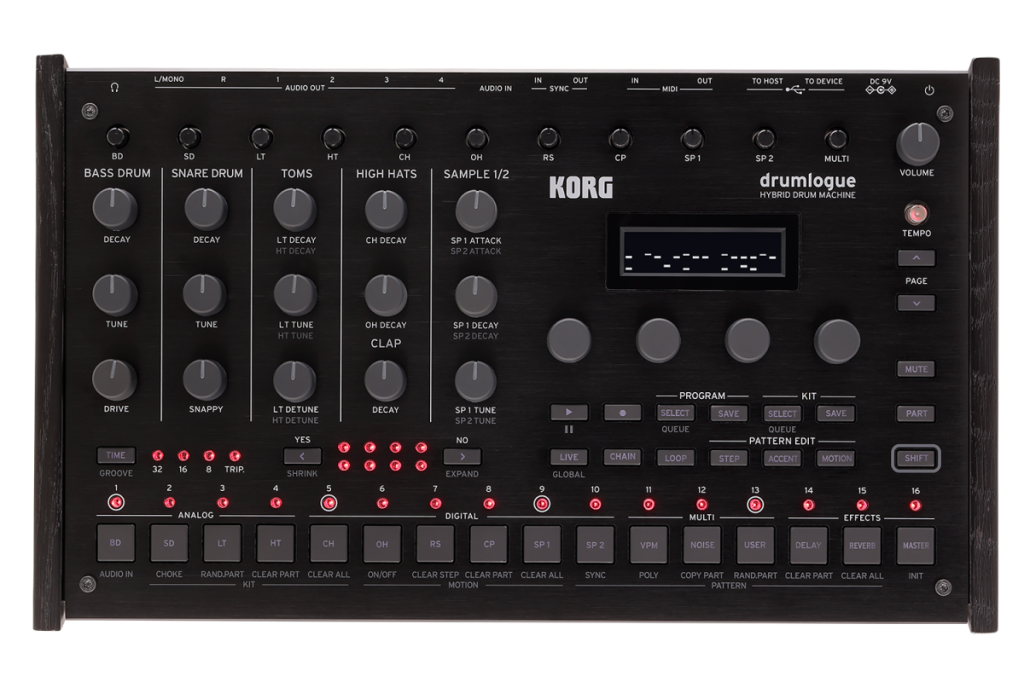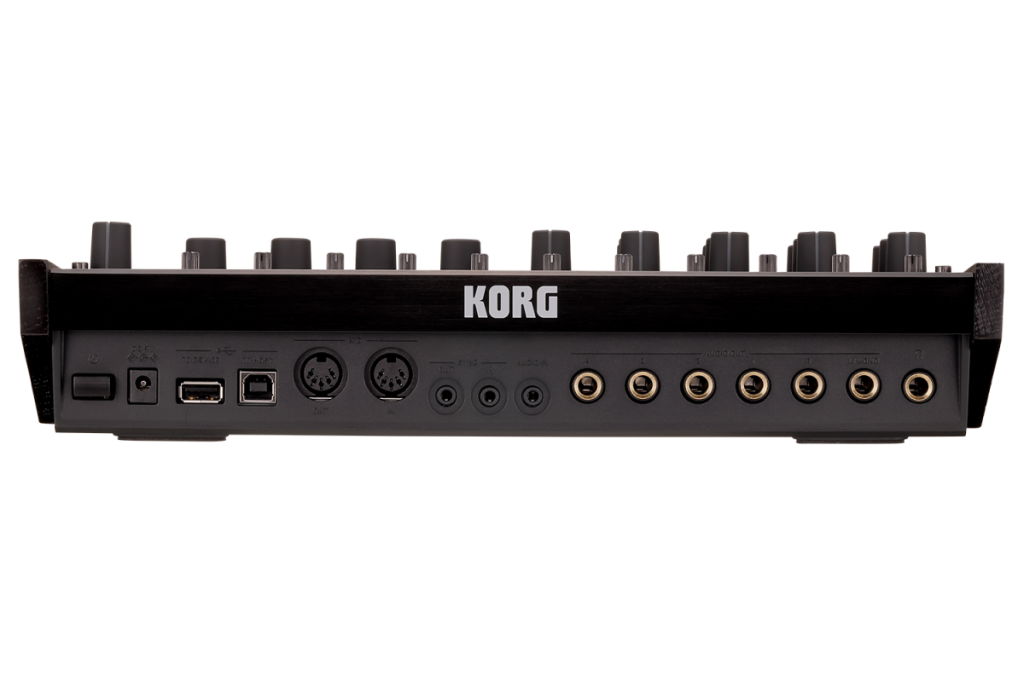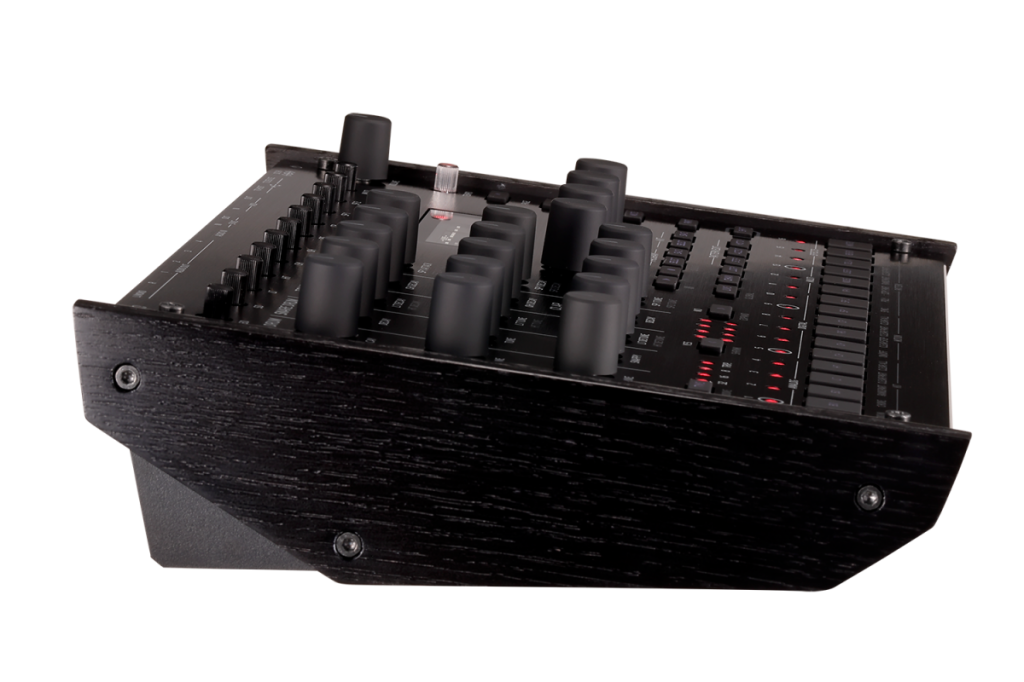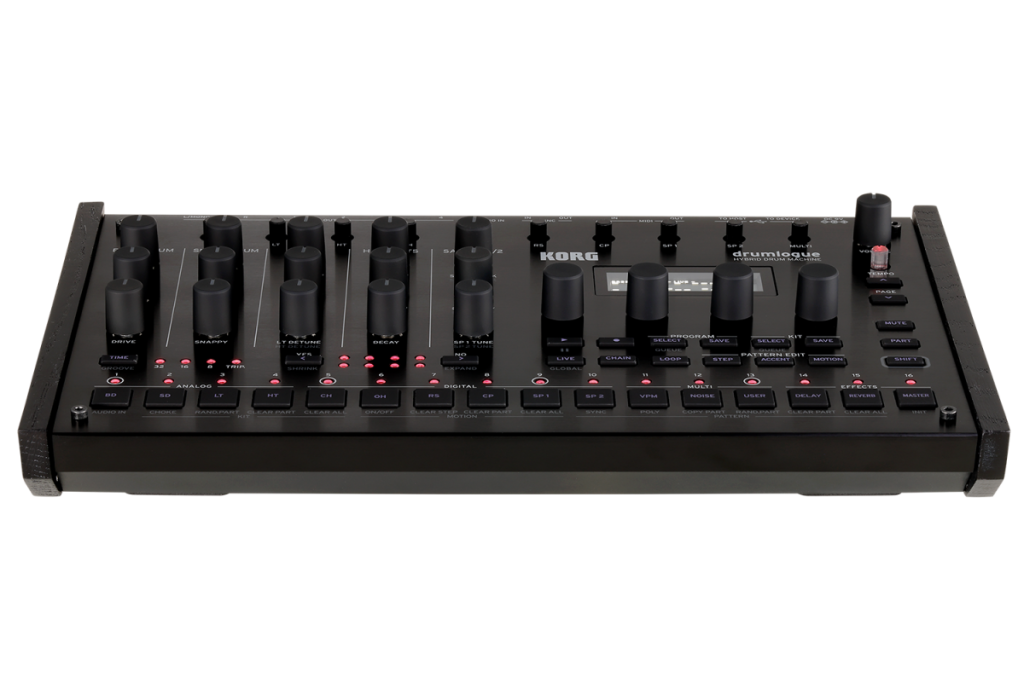Korg’s drumlogue was long expected, but now that it’s here, it looks like one of the most capable boxes from KORG ever. And that ‘logue SDK means you can customize it to do even more.
Korg bills the drumlogue as a “paradigm shift,” but it might be more accurate to say it just packs a lot of paradigms in a single box. And it’s funny to think this is, as advertised, the first analog/digital hybrid from Korg. (Roland couldn’t say that now because, you know, TR-909.)
It’s really the details that, at least on paper, give you pretty much everything you might wish for in a drum machine/tabletop synth. And you could use this as a synth, too, while you’re at it – it’s even 11-voice polyphonic.
That multi-engine approach brings together a lot of Korg’s greatest hits of the past years.

Analog (4) – bass drum, snare, low tom, high tom. These are evidently new circuits, designed by engineer Junichi Ikeuchi from the analog synth team, who worked on the ARP 2600 M, MS-20 mini, and ARP Odyssey.
Digital sample-based (6). You get six assignable PCM-based slots, with the ability to import your own – and some 64 kits to get you started. Oh yeah, and you can drag-and-drop samples with the machine connected to USB. Cough. Roland TR-8S. Ahem.
Note that user sample memory is limited to 32MB. That’s enough for some kits. Just don’t expect this to be an SP-404 or something. (And so when I say it does everything – not quite. It’s still primarily synth and analog/PCM drum machine.)
Digital Multi-Engine. One additional voice is dedicated to Multi-Engine, familiar from the prologue and minilogue xd. There’s a Variable Phase Modulation and Noise generator, plus a User Custom slot you can use for any synth voices you like – meaning this is also a compact desktop synthesizer, not only a “drum machine” per se.
Those Custom Synths in turn can be built with the logue SDK with filters, LFOs, polyphony (via MIDI, since you need to play them), and more.
Sinevibes Nano. Sinevibes’ own Artemiy Pavlov has of course built a new synth plugin for the drumlogue – and it’s included by default. This plugin alone sounds like it might make drumlogue worth the admission price:
- Dual oscillators
- Ring mod (which they say is optional, though… heh, I would be curious to see a synth where ring mod is on all the time!)
- 4-pole state-variable filter with soft clipping distortion
- Internal envelope generator
- Internal multi-waveform LFO
64-step sequencer. Per-step: probability, alternate trigger patterns, micro offsets, groove patterns. That means lots of polyrhythms and other complexities are possible, too. So this may look visually a bit like Korg’s recent electribes, but the feature set is something else.
Effects. Delay, reverb, and master effects, and all can be used simultaneously. (Cough again – some of the competition has been a bit underpowered in that area.) Plus you can use third-party SDK effects, too. And you can use external input, so the drumlogue is also an effects box when you want it to be. Those effects work as sends as well as master bus effects.

USB MIDI host. Oooh. This might actually be the most important feature here, because my one concern about the drumlogue is that a lot of useful parameters are inside menus – just because it does so much.
MIDI in/out and SYNC in/out are there, too, of course, plus USB for the computer.
Aluminum body, wooden side panels, OLED screen. Luxe.
New drumlogue SDK. So this is a new SDK, with new features. The good news – it appears to go beyond what the past logue SDK did. The bad news – it’s not backward compatible with units built for prologue, monologue xd, and NTS-1.
The SDK isn’t available yet; we can take a detailed look when it’s available. And I’m sure Artemiy will give us the complete scoop on what it’s like to port your old stuff.
All in all, this looks really nice. I still lament the lack of faders – nicely present on MFB, Roland, and Erica Synths boxes. But the other interesting thing about the drumlogue is – it looks like a compact, powerful entry into KORG’s customizable SDKs. And because it functions as synth and effects box as well as drum machine, it can nicely complement other drum machines and even ‘logue instruments. And really you can’t have too many of those, right? Okay … maybe.
I’ll see when we can get our hands on this one.
Check some sound examples here – example 3 is from Sinevibes’ nano:
Drumlogue
Oscillator Sink also has a full walkthrough:


https://www.korg.com/us/products/drums/drumlogue/index.php